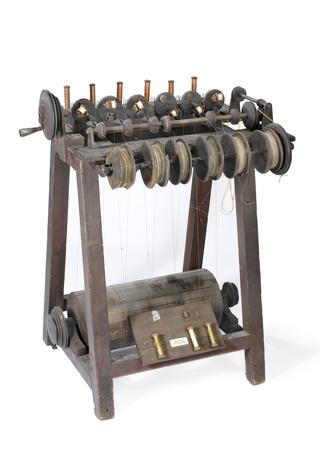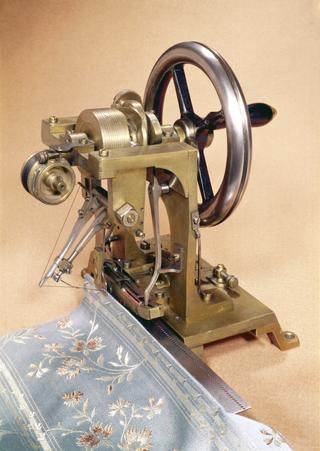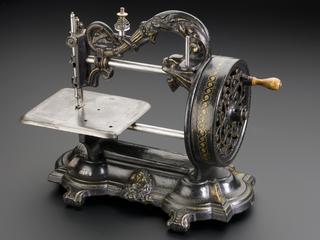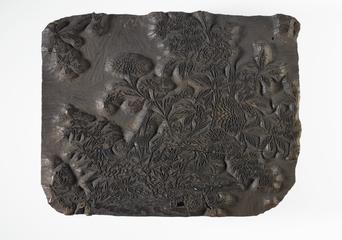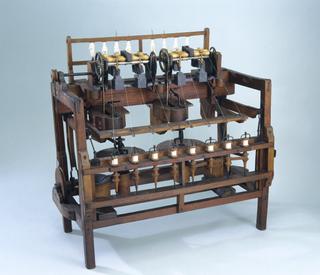
Great wheel.
Welsh farm spindle wheel (also known as the Great Wheel, Jersey Wheel).
The spindle wheel is the earliest type of spinning wheel. This type of spinning wheel, which is also known as the Jersey Wheel or the Welsh farm spinning wheel was used for spinning wool and later cotton until the introduction of machinery.
The material after cleaning is first carded to produce a rolag, in which the fibres form a light, open, untangled mass. Carding is performed with a pair of hand cards consisting of boards covered with leather set with rows of wire teeth, but originally with the heads of teazels or thistles (Latin - Carduus). The spinster attached the rolag to a length of yarn already on the spindle to rotate rapidly, and with her left hand draws out the rolg at an angle to the spindle. A few revolutions of the spindle brings the yarn to the tip, after which each turn causes it to slip off; and a twist is therby introduced into the drafted rolag.
As the rolag is extended, the twist passes mainly into the thinner places, where a firm yarn is produced which cannot be further extended. The thicker parts are drawn out further and, as the fibres thin in mass, they twist, so that ultimately a yarn of even thickness is produced. At the end of the draw extra turns may be given to consolidate the yarn.
The yarn is then moved at right angles to the spindle as the direction of rotation is reversed until the few turns at the bare end of the spindle have been unwound, a procedure known as backing-off. The wheel is then turned slowly in the original direction to wind on the yarn spun un the draw, at the same time guiding the yarn so as to form a well shaped cop. The next cycle is then comenced by drawing out a new rolag.
It is believed that the spindle wheel was introduced to Britain in the 14th century. It has many alternative regional names, Jersey Wheel (Channel Islands), Muckle Wheel (Scotland), Long Wheel (Ireland), Walking Wheel (USA). This simple wheel is an advance upon the pendant spindle which is believed to have originated in India. Its mechanical machine equivalent is the wool spinning mule.
Details
- Category:
- Textiles Machinery
- Object Number:
- 1953-324
- Measurements:
-
overall: 1.31 x 1.35 x .36 m
- type:
- spinning wheels
- credit:
- Drummond, K.R., Miss

